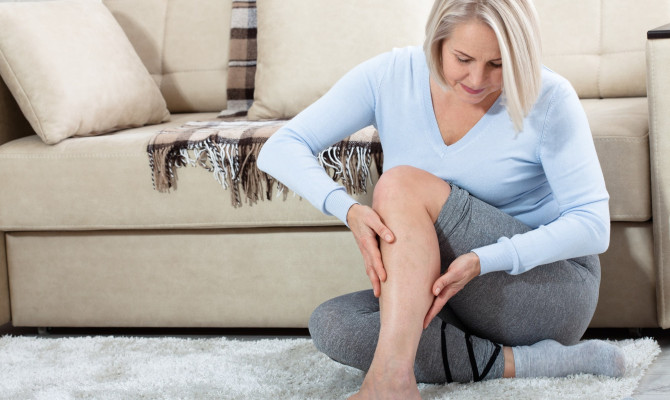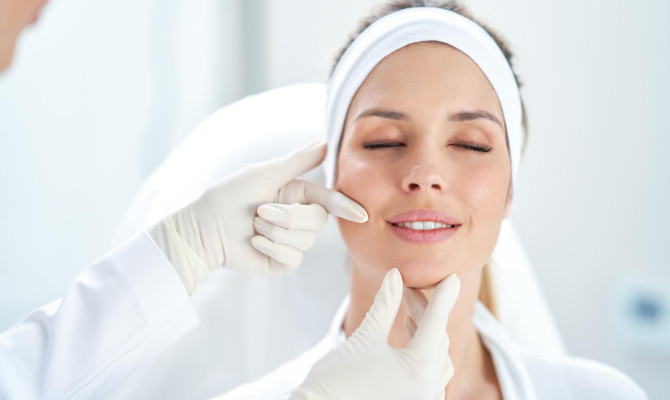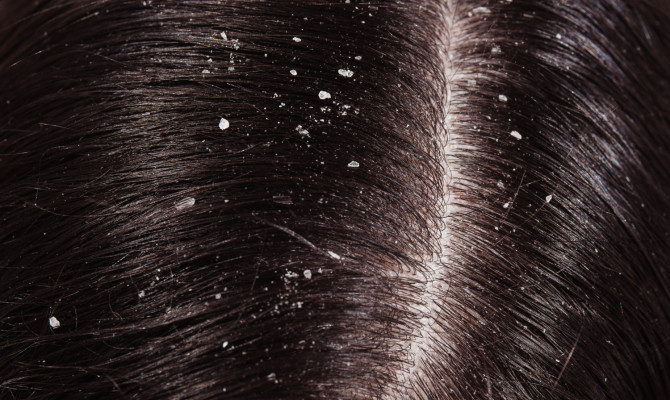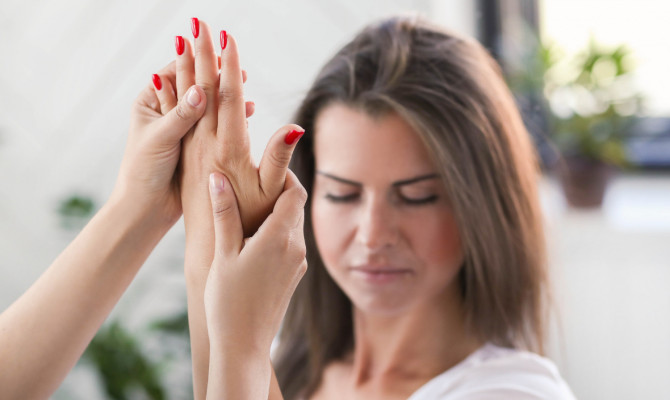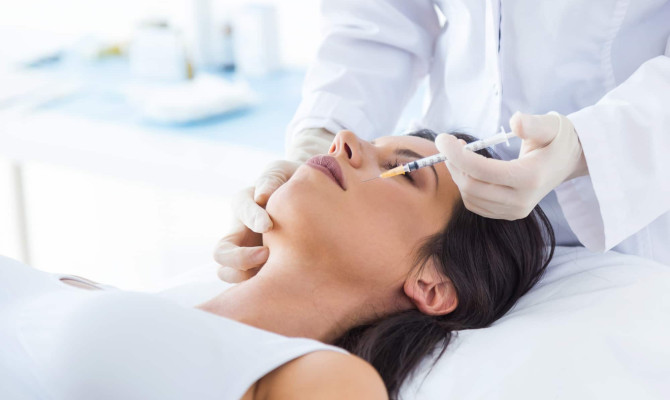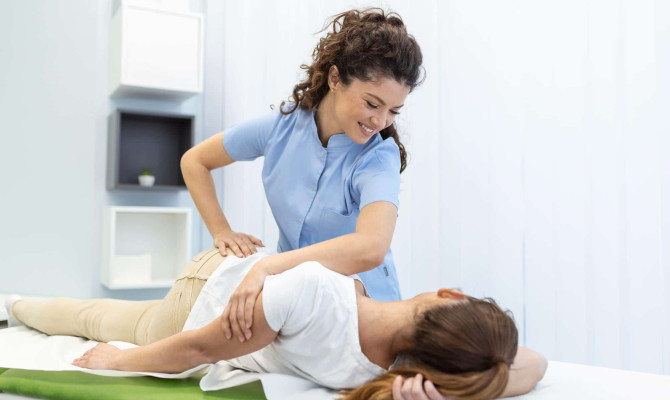What is Cupping Therapy ? Types, Uses, and Benefits

- Cupping therapy
- 16 Aug 2023
Overview
What is Cupping therapy?
The practice of cupping therapy is typically defined as a method that makes use of cups that are positioned over the patient’s skin in order to generate a state of negative pressure through the use of suction.
A traditional medical treatment that has been used for a very long time is cupping therapy. The process of cupping involves attaching cups to certain locations on the skin and generating a sub atmospheric pressure in the cups by the use of heat or suction, whichever method is preferred.
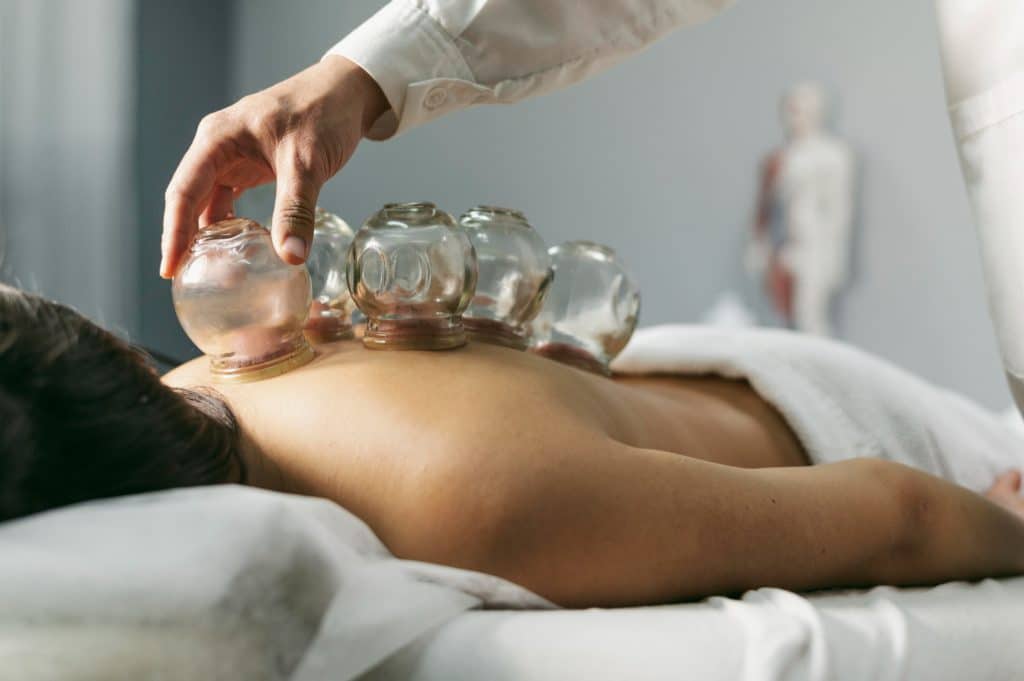
Types
Types of cupping therapy
Dry cupping
It is a technique for bruising the skin without causing any discomfort.3Types| Researched based study from Nlm.nih.gov
- In this method, the bottom of a glass cup is wiped down with methylated spirits, then lit on fire, and then placed over the target area of the skin.
- A partial vacuum is created as a result of the flame depleting the available supply of oxygen, which results in the skin being sucked into the mouth of the glass.
- Additionally, it expedites the discharge of pus, which is an important step in the healing process of wounds.
It consists of two stages:
- Prior to the application of suction, small incisions are made to the cups using a needle with a triangle-edged or plum-blossom tip
- An acupoint is strongly tapped for a short period in order to create bleeding.3Types| Researched based study from Nlm.nih.gov
Wet cupping
- Honey is applied topically in the case of wet cupping, which is a form of prophetic medicine3Types| Researched based study from Nlm.nih.gov
- This has two purposes: first, it secures the cups in place, and second, it helps scar the skin. This speeds up the rate at which the patient recovers.
- The cupping, puncturing and cupping (CPC) method is one of the two application strategies that are utilized during the wet cupping process.
- The CPC process consisted of a total of six processes, which were as follows: skin demarcation, sterilization, cupping, puncturing, and cupping.
- The puncturing and cupping procedure (PC) consisted of the following five steps: skin demarcation, sterilization, puncturing, and cupping. The final stage was sterilization.3Types| Researched based study from Nlm.nih.gov
Uses
Uses and Indications for cupping therapy
The use of cupping therapy has been shown to be beneficial for both the prevention of disease and the enhancement of overall health. Patients who have suffered from these issues use cupping therapy:1Uses| Researched based study from Nlm.nih.gov ,2Uses| Researched based study from Sciencedirect.com
- Reduces lower back pain
- Helps in neck and shoulder discomfort
- Helps in headaches and migraines management
- Reduces knee ache
- Helps in treating face paralysis
- Helps in brachialgia
- Improves carpal tunnel syndrome
- Helps in hypertension management
- Improves diabetes mellitus symptoms
- Reduces rheumatoid arthritis pain
- Improves symptoms of asthma
The specific areas of the body that are targeted for cupping therapy are determined by the illness that is being treated. The back is by far the most popular location for this procedure, followed by the chest, the abdomen, the buttocks, and finally the legs. Cupping can also be used to treat other locations, including the face and other facial features.
Benefits
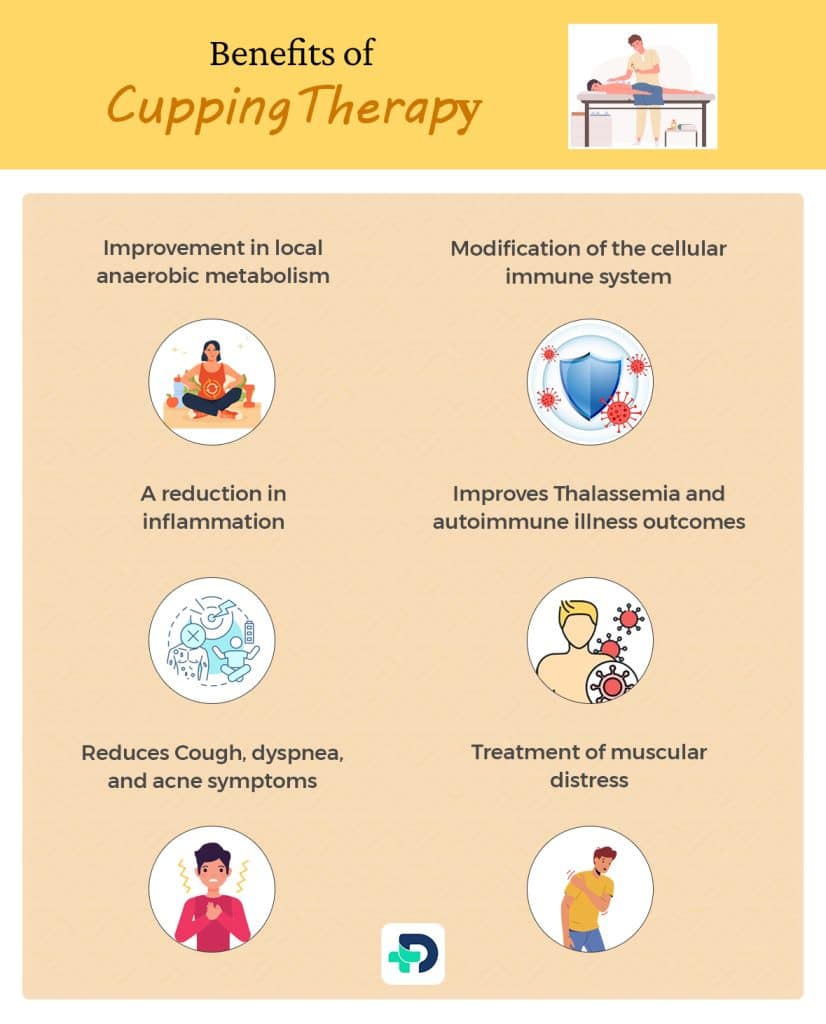
Benefits of cupping therapy
Some of the effects that have been attributed to cupping therapy include:
- Reduces pain associated with arthritis and other diseases
- Improves anaerobic metabolism
- Helps in reducing inflammation
- Strengthens cellular immunity
- Reduces cough
- Promotes flow of blood
- Helps in treatment of Thalassemia
Increase in pain thresholds
- By increasing the threshold for immediate pressure pain, speeding up the evacuation of waste and toxins from the body, and stimulating metabolism, cupping therapy can lead to vasodilation and dedicated blood circulation. It has been demonstrated to be beneficial for both the relaxation of muscles and the alleviation of chronic neck discomfort.1Benefits| Researched based study from Nlm.nih.gov ,2Benefits| Researched based study from Sciencedirect.com
- A number of conditions, including brachialgia paresthetica nocturna, lumbar injuries, scapulohumeral periarthritis, arthritic disease and neuralgia pain, have been shown to respond favorably to cupping therapy.
- Discomfort associated with the musculoskeletal system, migraines, or tension headaches, is the area in which there is the most compelling evidence that cupping therapy is beneficial.
Improvement in local anaerobic metabolism
- It appears that the bursting of capillaries that occurs during cupping has an impact that is both anti-inflammatory and immune-stimulating. As a consequence of this, cupping has the potential to enhance your anaerobic metabolism .
A reduction in inflammation
- The suction effect of the cups causes a response similar to that of microtrauma and is referred to as sterile inflammation. Following this, your body will initiate an immunological reaction, which will cause cells to be sent to the area that has been cupped and will reduce inflammation.
Modification of the cellular immune system
- Cupping therapy has been shown to drastically reduce the amount of lymphocytes that are present in the blood that is local to the afflicted area, while simultaneously increasing the number of neutrophils, which ultimately leads to an enhanced cellular immune response.
Improves Thalassemia and autoimmune illness outcomes
- When it comes to the treatment of thalassemia patients, the most important therapeutic advantage that cupping therapy can provide is the clearance of excess ferritin and iron from both the blood and the interstitial fluid.
Reduces Cough, dyspnea, and acne symptoms
- The goal of cupping therapy is to break up congestion and fluids in the lungs so that the body may more easily remove them safely. This is why the therapy is effective. Additionally, it causes your body’s immune system to react against the congestion, which ultimately assists in clearing it up.
Treatment of muscular distress
- Dry cupping is a technique that is frequently utilized for the treatment of musculoskeletal discomfort as well as muscular stress.
Other effects include
- Promotion of blood flow in the skin,
- Modifying the skin’s biomechanical features
Contraindications
Contraindications for cupping therapy
Conditions that should never be treated with cupping therapy because of the risk of serious complications include:
- Cancer
- Organ failure
- Hemophilia or a related blood disorder
- Having a pacemaker 1Contraindications| Researched based study from Nlm.nih.gov
The use of cupping therapy is not indicated for patients who are
- Elderly
- Pediatric
- Pregnant
- Currently experiencing menstruation
- Geriatric or pediatric 1Contraindications| Researched based study from Nlm.nih.gov
Conditions contraindicated for cupping therapy
Cupping therapy is generally not recommended for patients who are suffering from certain chronic disorders such as:1Contraindications| Researched based study from Nlm.nih.gov
- Cardiovascular disease
- Patients who are being treated with anticoagulants
- Patients who are currently undergoing an acute infection.
- People who have high serum cholesterol levels have an increased risk of acquiring cardiovascular diseases if they receive cupping treatment.
- The presence of a deep vein thrombosis, an open wound, or a fractured bone are all examples of conditions that should not be treated with this medication.
- Direct cupping should never be performed over any nerves, arteries, veins, varicose veins, skin lesions, body openings, lymph nodes, eyes, or inflammatory parts of the skin.
- When performed over excoriated, leaking, or diseased areas, cupping has the potential to induce levels of D-dimer to rise.
Adverse effects
Adverse effects of cupping therapy
The practice of cupping, also known as cup therapy, is generally considered safe. Although adverse events (AEs) caused by cupping therapy are not very commonly recorded, this does not mean that they do not happen.
The majority of adverse events (AEs) had a mild to moderate level of severity2Adverse effects| Researched based study from Sciencedirect.com
- The development of scar tissue is the adverse effect associated with cupping therapy
- Burns
- A headache
- Pruritus
- Dizziness
- Weariness
- Muscle tension
- Anemia
- Nausea
- Bullae formation
- Tiny hematoma or discomfort at the cupping site
- Abscess formation
- Skin infection
- Sleeplessness
- Hyperpigmentation
- Vasovagal attack
Negative consequences of cupping that can be avoided include:
- Scarring process
- Burn
- Formation of bullae (bullae formation)
- Abscess and skin infection
- Pruritus
- Anemia
- Panniculitis
Non Preventable cupping adverse events include:
- Koebner phenomenon
- Headaches
- Dizziness
- Tiredness
- Vasovagal assault
- Nausea
- Insomnia
Outlook
The outlook
Cupping treatment is an age-old kind of complementary and alternative medicine that involves the use of cups. There is an increasing body of research pointing to its potential usefulness in the treatment of various disorders, particularly pain-related conditions. The cupping therapy practice places a significant emphasis on the importance of adhering to all recommended infection control procedures.
The use of a heated cup, which is then applied to the skin, creates a partial vacuum that stimulates blood flow and aids in the body’s natural ability to heal itself. The treatment of aches and pains in the limbs, head, neck, shoulders, and back can benefit greatly from cupping, which is a straightforward technique that involves applying strong, fast strokes in a cyclic pattern to stimulate the muscles. Therefore, the practice of cupping has the potential to improve one’s quality of life.
Any feedback on this article?
 This Articles content was accurate
This Articles content was accurate Very Informative Article
Very Informative Article I have a question or a comment
I have a question or a comment
 This article contains inaccurate content
This article contains inaccurate content This article was not helpful
This article was not helpful I have a question or a comment
I have a question or a comment
We appreciate your helpful feedback!
Checkout our social pages
References
-
National Library of Medicine
Cupping Therapy | Uses | Benefits | Contraindications
-
Science Direct
Cupping Therapy: An Overview from a Modern Medicine Perspective | Uses | Benefits | Adverse effects
-
National Library of Medicine
Cupping therapy: A prudent remedy for a plethora of medical ailments | Types












